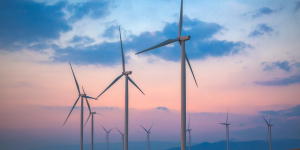Industrial electrification in Europe: the burden of electricity taxes slows down the transition
New WindEurope report highlights how electricity taxes hinder industrial electrification in Europe

The European Union has identified electrification and the spread of renewable sources as the pillars for strengthening industrial competitiveness in the long term. However, a recent study conducted by WindEurope in collaboration with VaasaETT, entitled “ Revamping electricity bills for a competitive and secure Europe” , highlights how the current structure of electricity bills, burdened by high taxes and charges, represents a brake on the development of electrification in the industrial sector.
Energy consumption in Europe and potential in electrification
Wind energy is set to play a central role in European electricity production : by 2030 it is expected to cover 35% of total consumption, exceeding 50% by 2050. It is a clean, local, scalable and competitive source, capable of reducing costs for families and businesses, while offering greater security and stability than fossil fuels.
Despite these advantages, the adoption of electricity as the main energy source in industrial processes is slow: today, only 31% of energy consumption in European industry comes from electricity.
Yet, according to the report's data, the potential is vast: 74% of the energy used in industrial processes could be supplied by electricity using technologies already available , such as electric arc furnaces for steel processing. A further 14% could be electrified by 2030 and another 5% by 2035. Only 7% of processes would remain non-electrifiable for now.
Many of the production activities already ready for the electric transition are linked to sectors that use low process temperatures, such as the production of paper, food, beverages, cellulose and chemicals. But even energy-intensive sectors such as the steel industry can be affected by a profound transformation, which would strengthen the European industrial fabric.
High taxes: a brake on competitiveness
Speaking at the annual WindEurope event in Copenhagen, the new report highlighted that electricity in Europe is taxed significantly more than in other industrialised countries . What’s more, electricity taxes in many cases fund activities unrelated to the energy sector, further distorting the market.
Comparative analysis shows that regulated industrial tariffs in Europe are up to four times higher than those applied in China . In addition, in several European countries electricity is taxed more than gas, despite the need to reduce dependence on fossil fuels. For example, in Poland, industry pays twice as much for electricity as for gas.
According to Vasiliki Klonari, Director of Energy Systems Integration at WindEurope, “Renewables have helped to reduce wholesale energy prices, but bills remain too high for households and businesses due to non-consumption-related taxes and regulated charges. Many of these costs should be covered by general taxation.”
Related Focus




